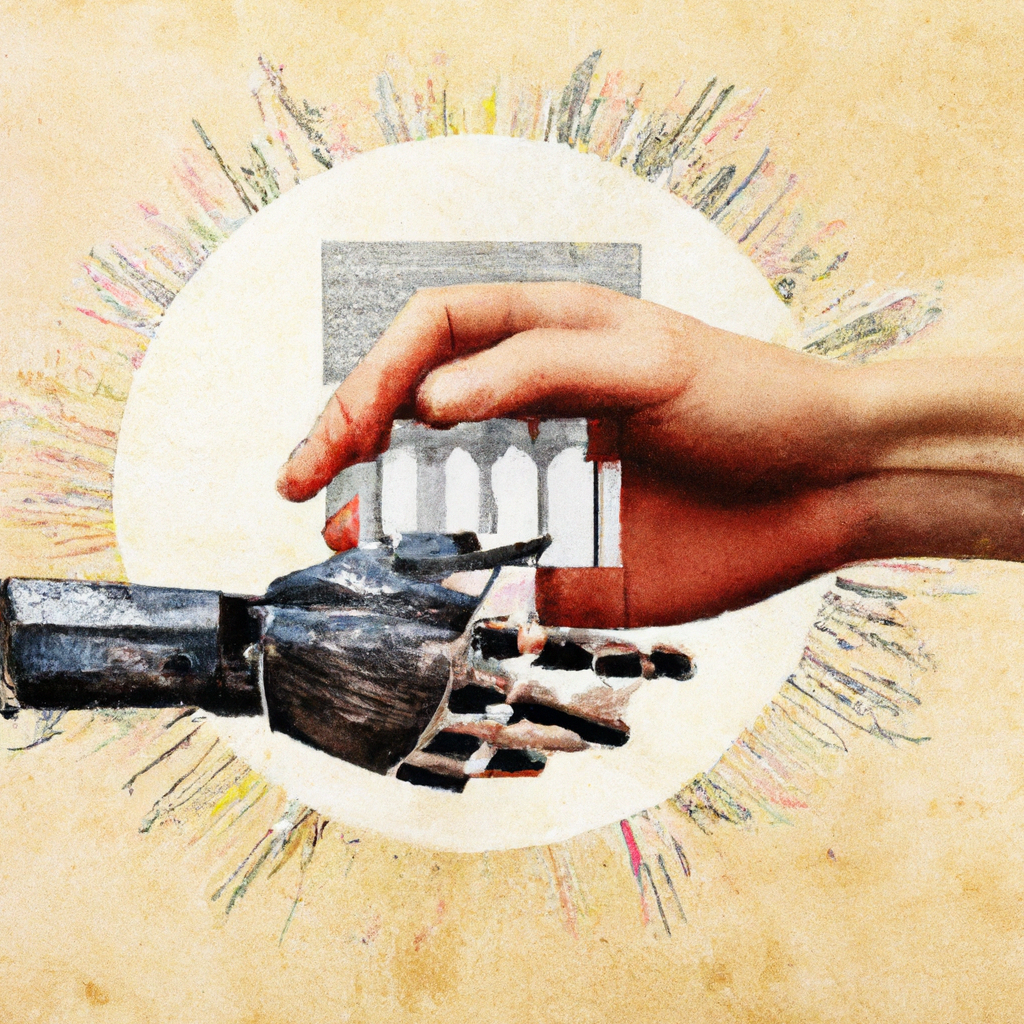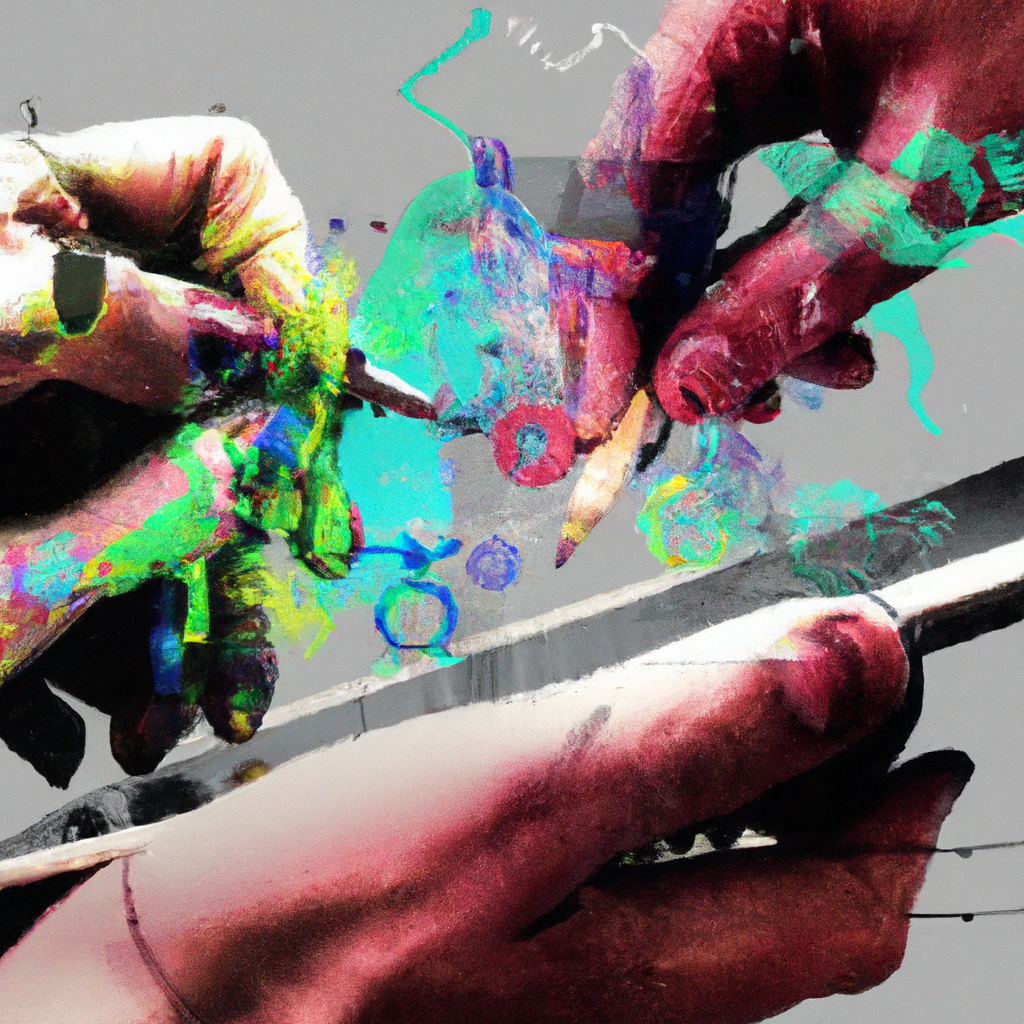In a world more and more pushed by synthetic intelligence, guaranteeing the authenticity of AI-generated content material has grow to be a paramount concern for creators. With the flexibility of AI to imitate and replicate human speech, writing, and even inventive creation, the query arises: how can creators assure that what they produce is really their very own? This text explores the varied methods and approaches that creators make use of to safeguard the integrity and originality of AI-generated content material, permitting for a clear and reliable artistic panorama.
Understanding AI-generated Content material
AI-generated content material refers to any textual content, picture, or video that’s created utilizing synthetic intelligence algorithms and applied sciences. Whereas AI has revolutionized varied industries, together with content material creation, it’s important to make sure the authenticity of such content material. Figuring out authenticity poses a number of challenges, together with evaluating the supply, analyzing the content material type and high quality, and distinguishing between AI-generated and human-created content material.
Figuring out Authenticity Challenges
Evaluating the supply of the content material
One key problem in assessing the authenticity of AI-generated content material is evaluating the supply. In contrast to conventional content material, which is usually attributed to a human creator, AI-generated content material lacks a visual supply. It’s essential for creators to ascertain mechanisms to hint the origin of the content material and confirm its authenticity. This may contain implementing sturdy metadata techniques or using blockchain expertise to keep up a clear file of the content material’s technology.
Analyzing the content material type and high quality
One other problem lies in evaluating the type and high quality of AI-generated content material. AI algorithms can imitate human-like writing or produce beautiful visuals, making it more and more troublesome to differentiate AI-generated content material from human-created content material. Creators must develop subtle strategies for analyzing the nuances of the content material, equivalent to figuring out patterns, language utilization, or visible inconsistencies, to evaluate its authenticity.
Distinguishing between AI-generated and human-created content material
Differentiating AI-generated content material from human-created content material is a crucial problem. The development of AI expertise has led to algorithms that generate extremely convincing content material, making it troublesome for customers to discern the supply. Creators should incorporate options within the content material or platforms that make it clear whether or not the content material is AI-generated. By doing so, they might help customers make knowledgeable selections concerning the authenticity and trustworthiness of the content material.

Implementing Strong Verification Processes
To deal with the authenticity challenges related to AI-generated content material, creators must implement sturdy verification processes. These processes contain creating dependable AI detection algorithms, establishing rigorous content material assessment techniques, collaborating with AI specialists and ethicists, and staying up to date with AI developments and vulnerabilities.
Growing dependable AI detection algorithms
Creators can develop superior AI detection algorithms that may analyze varied options, equivalent to writing type, picture manipulation methods, or video anomalies, to find out if the content material is AI-generated. These algorithms will be skilled utilizing machine studying methods on huge datasets of AI-generated and human-created content material. By repeatedly refining these algorithms, creators can enhance the accuracy of detecting AI-generated content material.
Establishing rigorous content material assessment techniques
To make sure the authenticity of AI-generated content material, implementing rigorous content material assessment techniques is crucial. These techniques ought to contain human specialists who can fastidiously consider the content material for any indicators of AI technology or manipulation. By combining the experience of people with AI instruments, creators can reliably assess the authenticity of the content material earlier than it’s printed or shared.
Collaborating with AI specialists and ethicists
Collaboration with AI specialists and ethicists is essential in designing efficient verification processes. These specialists can present worthwhile insights into the newest AI methods, potential biases, and moral concerns related to AI-generated content material. By working collectively, creators can develop complete methods that strike a stability between selling AI innovation and guaranteeing the authenticity of the content material.
Staying up to date with AI developments and vulnerabilities
To remain forward within the race towards AI-generated content material, creators should keep up to date with the newest developments and vulnerabilities in AI expertise. By actively monitoring the analysis panorama and collaborating in related conferences and workshops, creators can improve their understanding of AI algorithms, enabling them to develop higher detection mechanisms and reply to new challenges posed by AI-generated content material.
Making certain Transparency and Disclosure
Transparency and disclosure are important components in constructing belief and authenticity in AI-generated content material. Creators can make use of varied methods to make sure transparency, together with publicly acknowledging AI-generated content material, displaying AI-generated markers or watermarks, revealing AI bias or limitations, and offering clear pointers for distinguishing AI content material.
Publicly acknowledging AI-generated content material
When creators publicly acknowledge that sure content material is AI-generated, it helps set up transparency and builds belief with the viewers. By clearly stating the involvement of AI expertise within the content material creation course of, creators reveal a dedication to authenticity and honesty.
Displaying AI-generated markers or watermarks
Creators can incorporate AI-generated markers or watermarks into the content material to point its origin. These markers can take the type of digital signatures or distinctive identifiers which are troublesome to duplicate. By prominently displaying these markers, creators allow customers to acknowledge AI-generated content material and make knowledgeable selections about its authenticity.
Revealing AI bias or limitations
AI algorithms can exhibit biases or limitations which will affect the content material they generate. Creators have a accountability to reveal any biases or limitations related to AI-generated content material. By overtly speaking these components, creators empower customers to critically consider the content material and think about potential biases when decoding the data.
Offering clear pointers for distinguishing AI content material
To help customers in distinguishing AI-generated content material from human-created content material, creators ought to present clear pointers. These pointers can define key traits or options that assist establish AI-generated content material. By educating customers, creators allow them to make knowledgeable selections in regards to the authenticity and reliability of the content material they encounter.

Selling Moral AI Use and Improvement
Selling moral AI use and improvement is essential for guaranteeing the authenticity and accountable deployment of AI-generated content material. Creators can contribute to this by creating pointers for accountable AI use, facilitating open discussions and collaborations, encouraging accountability for AI-generated content material, and avoiding malicious makes use of of AI-generated content material.
Creating pointers for accountable AI use
Creators ought to set up clear pointers for the accountable use of AI in content material creation. These pointers can define moral concerns and greatest practices that creators must observe when using AI algorithms. By selling accountable AI use, creators can make sure that AI-generated content material aligns with moral rules and values.
Facilitating open discussions and collaborations
Open discussions and collaborations between creators, AI specialists, ethicists, and the general public are important for addressing moral considerations associated to AI-generated content material. By fostering an inclusive surroundings, creators can incorporate various views, establish potential dangers, and collectively develop methods for mitigating these dangers. Collaboration can result in extra complete options that think about each the advantages and potential harms of AI-generated content material.
Encouraging accountability for AI-generated content material
Creators should maintain themselves accountable for the content material they produce. This contains taking accountability for any potential biases, errors, or unintended penalties arising from AI-generated content material. By acknowledging and addressing such points, creators reveal a dedication to transparency and moral accountability.
Avoiding malicious makes use of of AI-generated content material
Whereas AI-generated content material presents important potential, creators have to be cautious of its potential misuse. It’s important to ascertain safeguards to stop the malicious manipulation or dissemination of AI-generated content material, equivalent to deepfakes or misinformation. Creators can actively take part in public consciousness campaigns and collaborate with information organizations and fact-checkers to fight the unfold of deceptive or dangerous AI-generated content material.
Monitoring and Assessing AI-generated Content material
Steady monitoring and evaluation are essential for sustaining the authenticity and high quality of AI-generated content material. Creators can implement varied methods to observe and assess AI-generated content material, together with conducting common content material audits, analyzing consumer suggestions and engagement, measuring the affect of AI-generated content material, and figuring out potential biases or dangerous results.
Conducting common content material audits
Common content material audits assist creators consider the authenticity and high quality of AI-generated content material. By reviewing a consultant pattern of AI-generated content material, creators can establish any points associated to biased or deceptive content material, and take essential corrective actions. These audits allow steady enchancment and make sure that the content material aligns with the established pointers and moral requirements.
Analyzing consumer suggestions and engagement
Consumer suggestions and engagement present worthwhile insights into the notion and affect of AI-generated content material. Creators ought to actively monitor consumer responses, feedback, and considerations concerning the authenticity and credibility of the content material. By analyzing this suggestions, creators can establish areas for enchancment, tackle consumer considerations, and improve the general high quality and trustworthiness of the content material.
Measuring the affect of AI-generated content material
Creators can measure the affect of AI-generated content material by analyzing its attain, engagement, and affect on the audience. By assessing key efficiency indicators equivalent to views, shares, or conversions, creators can gauge the effectiveness and authenticity of the content material. This data-driven strategy helps creators make knowledgeable selections on content material optimization and authenticity enhancement.
Figuring out potential biases or dangerous results
AI algorithms can inadvertently introduce biases or have dangerous results on the content material they generate. Creators ought to proactively establish and tackle any biases, discrimination, or unintended penalties arising from AI-generated content material. By conducting common assessments and using methods like bias testing, creators can mitigate these dangers and make sure the authenticity and equity of the content material.

Taking Authorized and Regulatory Measures
Authorized and regulatory measures are important to guard the authenticity and integrity of AI-generated content material. Creators should adhere to present legal guidelines and rules whereas contemplating the distinctive challenges posed by AI-generated content material. Some key measures embrace implementing copyright and mental property legal guidelines, implementing AI-specific regulation and governance, addressing authorized legal responsibility for AI-generated content material, and guaranteeing compliance with business requirements.
Imposing copyright and mental property legal guidelines
Creators ought to make sure that AI-generated content material respects copyright and mental property legal guidelines. By acquiring essential permissions or licenses for any copyrighted parts integrated into the content material, creators can keep away from authorized disputes and shield the authenticity of their very own creations. This contains guaranteeing that AI algorithms utilized in content material creation don’t infringe upon mental property rights.
Implementing AI-specific regulation and governance
Given the distinctive nature of AI-generated content material, particular rules and governance frameworks might help tackle authenticity considerations. Creators ought to collaborate with policymakers, authorized specialists, and business stakeholders to develop rules that define the obligations and obligations related to AI-generated content material. Such frameworks can guarantee transparency, accountability, and consumer safety within the AI content material panorama.
Addressing authorized legal responsibility for AI-generated content material
Figuring out authorized legal responsibility for AI-generated content material will be complicated. Creators must navigate the authorized panorama to establish potential liabilities and obligations related to the content material. By consulting authorized specialists and staying knowledgeable about related legal guidelines and precedents, creators can proactively tackle authorized legal responsibility considerations and mitigate dangers.
Making certain compliance with business requirements
Compliance with business requirements is essential to sustaining authenticity and belief in AI-generated content material. Creators ought to adhere to established pointers, moral codes, and greatest practices in content material creation. By guaranteeing compliance, creators reveal a dedication to accountable AI use and contribute to the general integrity of the AI content material ecosystem.
Educating and Participating Customers
Educating and interesting customers are key methods for fostering consciousness and understanding of AI-generated content material. Creators can play an important function in educating customers by elevating consciousness about AI-generated content material, offering training on detecting manipulated content material, encouraging consumer suggestions and reporting, and incentivizing accountable content material sharing.
Elevating consciousness about AI-generated content material
Creators ought to proactively educate customers in regards to the presence and implications of AI-generated content material. This may be achieved via on-line assets, public campaigns, or collaborations with instructional establishments. By elevating consciousness, creators empower customers to critically consider content material, make knowledgeable selections, and acknowledge the potential dangers related to AI-generated content material.
Offering training on detecting manipulated content material
To equip customers with the talents to detect manipulated content material, creators can present instructional supplies on figuring out indicators of AI technology or manipulation. These assets can spotlight key indicators, equivalent to inconsistencies, unnatural habits, or visible artifacts, that customers ought to search for when evaluating content material authenticity. By educating customers, creators contribute to a extra knowledgeable and vigilant consumer neighborhood.
Encouraging consumer suggestions and reporting
Creators ought to actively encourage consumer suggestions and reporting regarding AI-generated content material. By creating user-friendly mechanisms and channels for reporting suspected AI-generated content material or content material that raises considerations, creators can improve their capability to detect and tackle authenticity points. Consumer suggestions performs a crucial function in steady enchancment and sustaining belief between creators and their viewers.
Incentivizing accountable content material sharing
To advertise accountable content material sharing, creators can incentivize customers to confirm the authenticity of the content material earlier than sharing it. This may be performed via reward techniques, badges, or recognition for verifying content material accuracy. By selling accountable sharing practices, creators set up a tradition of authenticity and encourage customers to be extra vigilant in regards to the content material they eat and distribute.

Mitigating Deepfake and Misinformation Dangers
Deepfake expertise and the unfold of misinformation pose important challenges to the authenticity and trustworthiness of content material. Creators can mitigate these dangers by creating deepfake detection applied sciences, constructing sturdy fact-checking processes, collaborating with information organizations and fact-checkers, and creating public consciousness campaigns towards misinformation.
Growing deepfake detection applied sciences
Creators ought to spend money on the event of superior applied sciences that may detect and mitigate the dangers related to deepfake content material. AI algorithms will be skilled to investigate patterns, inconsistencies, or refined artifacts indicative of deepfakes. By integrating these detection applied sciences into content material platforms, creators can reduce the dissemination of deceptive or malicious content material.
Constructing sturdy fact-checking processes
Truth-checking performs a vital function in verifying the authenticity of AI-generated content material. Creators ought to collaborate with respected fact-checkers and information organizations to ascertain sturdy fact-checking processes. These processes contain rigorous evaluation of content material accuracy and verification of sources earlier than content material is printed or shared. By implementing dependable fact-checking mechanisms, creators can fight the unfold of misinformation.
Collaborating with information organizations and fact-checkers
Creators ought to actively collaborate with information organizations and fact-checkers to deal with authenticity considerations associated to AI-generated content material. By sharing data, assets, and experience, creators and fact-checkers can collectively develop methods to establish and fight AI-generated misinformation. Collaborations additionally promote a extra coordinated response to the challenges posed by AI-generated content material.
Creating public consciousness campaigns towards misinformation
Creators have a accountability to lift public consciousness in regards to the dangers and penalties of misinformation, together with AI-generated misinformation. Public consciousness campaigns can educate people in regards to the affect of misinformation on society, the function of AI in content material manipulation, and the significance of critically evaluating the content material they encounter. By fostering a extra knowledgeable and vigilant public, creators contribute to the battle towards misinformation.
Conclusion
Making certain the authenticity of AI-generated content material is a urgent problem in in the present day’s digital panorama. By understanding the challenges related to figuring out authenticity and implementing sturdy verification processes, creators can preserve belief and integrity in AI-generated content material. Transparency and disclosure are paramount, together with selling moral AI use and improvement. Monitoring and assessing AI-generated content material, taking authorized and regulatory measures, and educating and interesting customers are important methods in constructing authenticity. Lastly, mitigating deepfake and misinformation dangers via technological developments and public consciousness campaigns is significant. By collectively addressing these components, creators can navigate the complexities of AI-generated content material and promote a reliable and genuine digital ecosystem.


